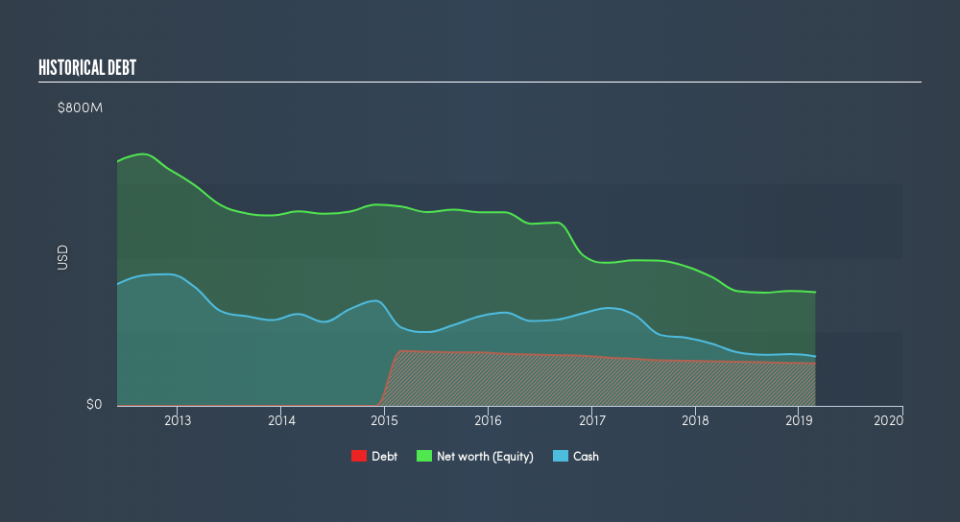Is Progress Software Corporation (NASDAQ:PRGS) A Financially Strong Company?

Want to participate in a short research study? Help shape the future of investing tools and you could win a $250 gift card!
Small and large cap stocks are widely popular for a variety of reasons, however, mid-cap companies such as Progress Software Corporation (NASDAQ:PRGS), with a market cap of US$2.0b, often get neglected by retail investors. However, generally ignored mid-caps have historically delivered better risk-adjusted returns than the two other categories of stocks. Today we will look at PRGS’s financial liquidity and debt levels, which are strong indicators for whether the company can weather economic downturns or fund strategic acquisitions for future growth. Note that this information is centred entirely on financial health and is a top-level understanding, so I encourage you to look further into PRGS here.
View our latest analysis for Progress Software
PRGS’s Debt (And Cash Flows)
Over the past year, PRGS has maintained its debt levels at around US$115m including long-term debt. At this current level of debt, the current cash and short-term investment levels stands at US$133m to keep the business going. Additionally, PRGS has produced US$114m in operating cash flow during the same period of time, resulting in an operating cash to total debt ratio of 100%, signalling that PRGS’s operating cash is sufficient to cover its debt.
Can PRGS pay its short-term liabilities?
With current liabilities at US$182m, the company has been able to meet these commitments with a current assets level of US$216m, leading to a 1.18x current account ratio. The current ratio is calculated by dividing current assets by current liabilities. Generally, for Software companies, this is a reasonable ratio as there's enough of a cash buffer without holding too much capital in low return investments.
Does PRGS face the risk of succumbing to its debt-load?
With a debt-to-equity ratio of 37%, PRGS's debt level may be seen as prudent. PRGS is not taking on too much debt commitment, which may be constraining for future growth. We can check to see whether PRGS is able to meet its debt obligations by looking at the net interest coverage ratio. A company generating earnings before interest and tax (EBIT) at least three times its net interest payments is considered financially sound. In PRGS's, case, the ratio of 20.47x suggests that interest is comfortably covered, which means that lenders may be inclined to lend more money to the company, as it is seen as safe in terms of payback.
Next Steps:
PRGS’s high cash coverage and appropriate debt levels indicate its ability to utilise its borrowings efficiently in order to generate ample cash flow. Furthermore, the company exhibits proper management of current assets and upcoming liabilities. I admit this is a fairly basic analysis for PRGS's financial health. Other important fundamentals need to be considered alongside. You should continue to research Progress Software to get a more holistic view of the stock by looking at:
Future Outlook: What are well-informed industry analysts predicting for PRGS’s future growth? Take a look at our free research report of analyst consensus for PRGS’s outlook.
Valuation: What is PRGS worth today? Is the stock undervalued, even when its growth outlook is factored into its intrinsic value? The intrinsic value infographic in our free research report helps visualize whether PRGS is currently mispriced by the market.
Other High-Performing Stocks: Are there other stocks that provide better prospects with proven track records? Explore our free list of these great stocks here.
We aim to bring you long-term focused research analysis driven by fundamental data. Note that our analysis may not factor in the latest price-sensitive company announcements or qualitative material.
If you spot an error that warrants correction, please contact the editor at editorial-team@simplywallst.com. This article by Simply Wall St is general in nature. It does not constitute a recommendation to buy or sell any stock, and does not take account of your objectives, or your financial situation. Simply Wall St has no position in the stocks mentioned. Thank you for reading.

